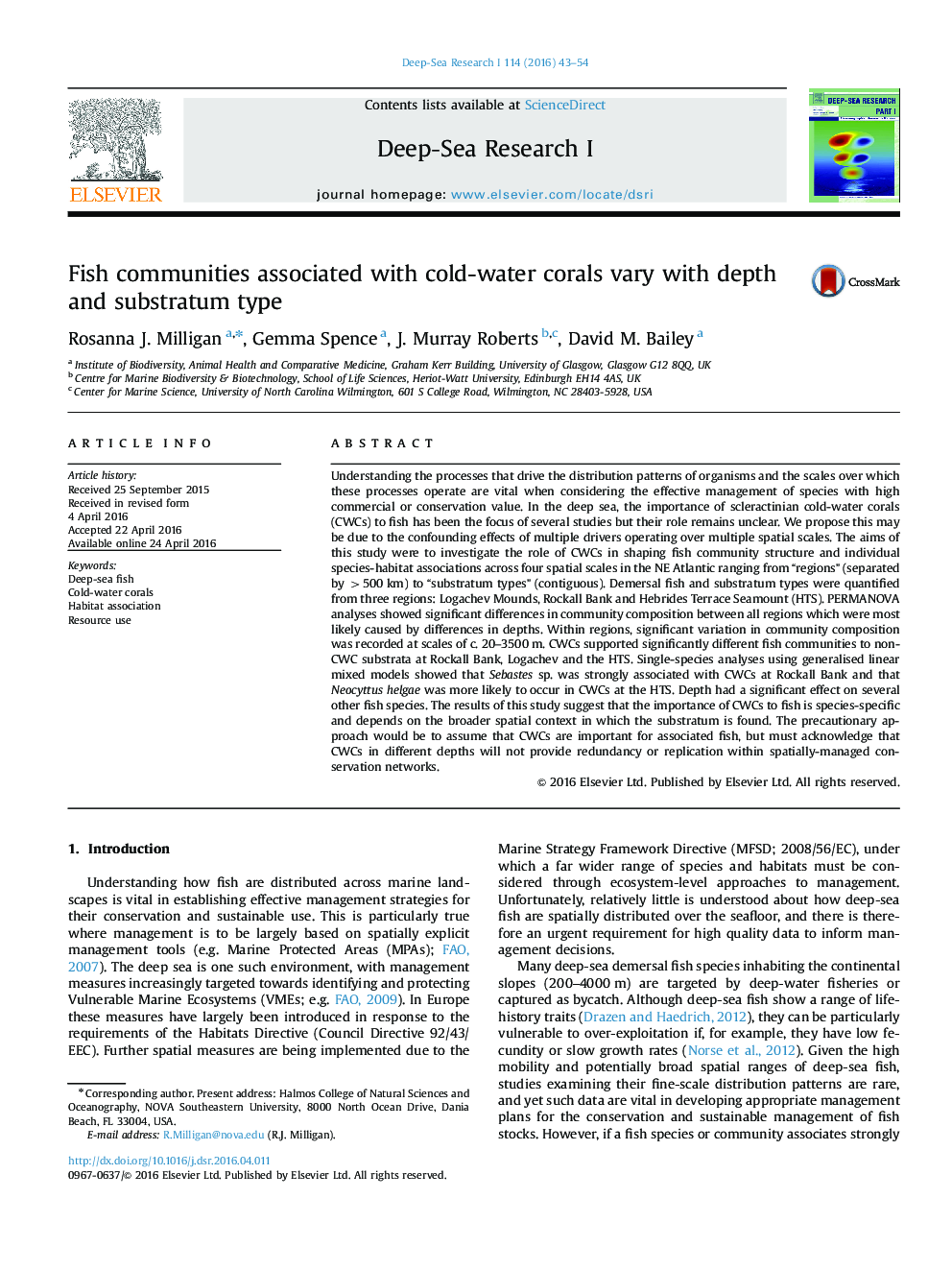| Article ID | Journal | Published Year | Pages | File Type |
|---|---|---|---|---|
| 6383379 | Deep Sea Research Part I: Oceanographic Research Papers | 2016 | 12 Pages |
Abstract
Understanding the processes that drive the distribution patterns of organisms and the scales over which these processes operate are vital when considering the effective management of species with high commercial or conservation value. In the deep sea, the importance of scleractinian cold-water corals (CWCs) to fish has been the focus of several studies but their role remains unclear. We propose this may be due to the confounding effects of multiple drivers operating over multiple spatial scales. The aims of this study were to investigate the role of CWCs in shaping fish community structure and individual species-habitat associations across four spatial scales in the NE Atlantic ranging from “regions” (separated by >500Â km) to “substratum types” (contiguous). Demersal fish and substratum types were quantified from three regions: Logachev Mounds, Rockall Bank and Hebrides Terrace Seamount (HTS). PERMANOVA analyses showed significant differences in community composition between all regions which were most likely caused by differences in depths. Within regions, significant variation in community composition was recorded at scales of c. 20-3500Â m. CWCs supported significantly different fish communities to non-CWC substrata at Rockall Bank, Logachev and the HTS. Single-species analyses using generalised linear mixed models showed that Sebastes sp. was strongly associated with CWCs at Rockall Bank and that Neocyttus helgae was more likely to occur in CWCs at the HTS. Depth had a significant effect on several other fish species. The results of this study suggest that the importance of CWCs to fish is species-specific and depends on the broader spatial context in which the substratum is found. The precautionary approach would be to assume that CWCs are important for associated fish, but must acknowledge that CWCs in different depths will not provide redundancy or replication within spatially-managed conservation networks.
Related Topics
Physical Sciences and Engineering
Earth and Planetary Sciences
Geology
Authors
Rosanna J. Milligan, Gemma Spence, J. Murray Roberts, David M. Bailey,
